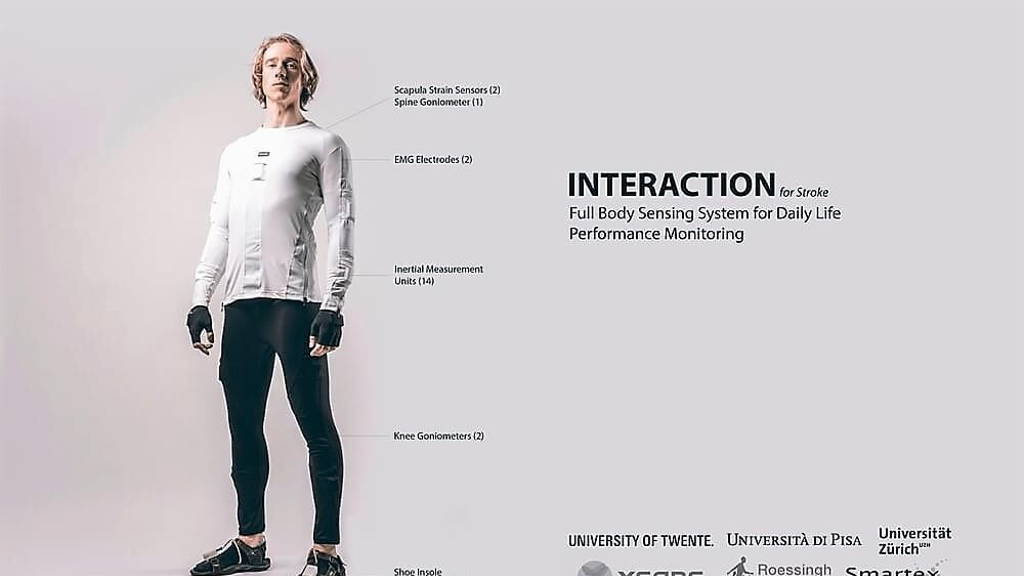Annually about 45.000 people in the Netherlands suffer from a stroke. The current ageing trend makes it a logical assumption that this number is going to continue to rise. A stroke changes the life of the patient radically, and often comes with physical limitations. To help patients adapt to these changes, they can enter rehabilitation programs. These programs are designed to support patients in functioning in day-to-day life. However, not much is known about the lives these patients lead outside of rehabilitation clinics. The INTERACTION-systeem van Bart Klaassen should offer a solution for this problem.
The system has been tested on several study objects. These people were asked to wear the suit underneath their clothes for three months. The 41 sensors the suit carries measure, among other things, muscle strength, stretch in back and hands and pressure in the shoes of the patients. Sensors are also placed on large body parts. The suit is equipped with a portable transmitter which transmits all of the information gathered to servers at the University of Twente.
41 sensors in a suit
The INTERACTION system monitors and analyses how stroke patients move in their day-to-day lives. Discovering and understanding how these people function could make rehabilitation programs more effective and lower healthcare costs.The system has been tested on several study objects. These people were asked to wear the suit underneath their clothes for three months. The 41 sensors the suit carries measure, among other things, muscle strength, stretch in back and hands and pressure in the shoes of the patients. Sensors are also placed on large body parts. The suit is equipped with a portable transmitter which transmits all of the information gathered to servers at the University of Twente.






